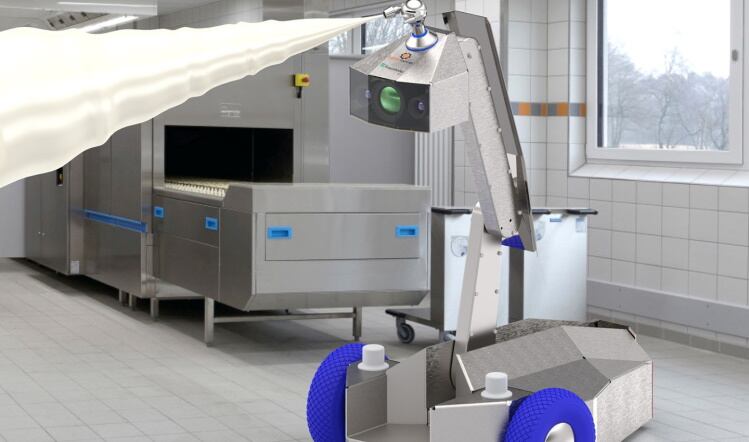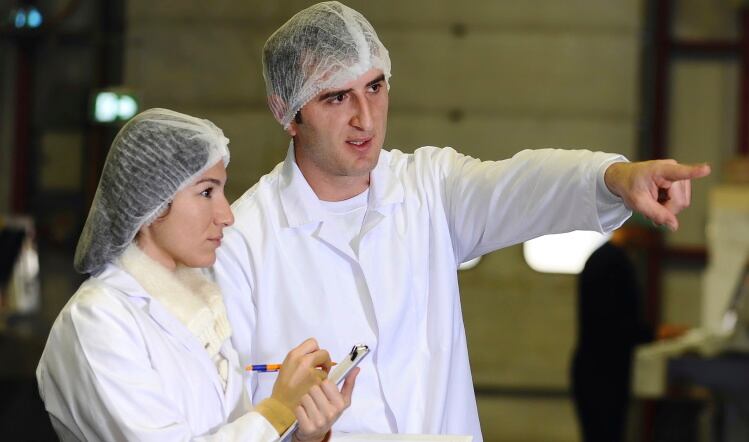Validations show that a process or control measure will work. Verifications show we are still doing what we are supposed to be doing and the process or control measure still works.
For due diligence, food processors must be able to demonstrate the use of appropriate documented control measures designed to eliminate or minimise risks. Validations are usually necessary to prove these control measures are adequate and appropriate. This is especially vital in two common areas: thermal processing and allergen control.
Thermal processing
Thermal processing refers to a cooking process. They are often a critical control point and most operations will consider all relevant variables with regards to the process when implementing a validation. Potential examples include:
- Time (for example, how long does the food spend in the oven? What belt speed is the travelling oven set at? What is the flow rate of the pasteuriser?)
- Temperature (for example, how hot is it in the oven? Is it a cold start or is the equipment pre-heated?)
- Temperature of the food (for example, how cold or hot is the food as it goes into the oven?)
- Loading or volume (for example, how much food is put into the process? Are vessels filled or half-filled? Are belts for belt-fed ovens fully loaded and to what depth? Is the product single-layered, double-layered or more? Are walk-in ovens fully-loaded or half-loaded?)
- Size (is there a weight or size variance in the food? For example, if meat joints are being processed, do they vary between 1kg and 1.5kg?)
Other variables might include the use of steam in ovens or the use of pressure or vacuum in cooking vessels.
This is where we must consider worst-case scenario when we carry out validations. The simple premise is: if the process or control measure works under worst-case conditions, it will work under any variation of conditions.
Worst-case scenario for thermal processing therefore would mean:
- the shortest possible time
- the lowest possible temperature
- the lowest possible temperature of the food going into the process
- the highest loading or volume
- the largest possible size of the food
This list is not exhaustive, and any variable should be considered in the process.
Allergen control
Experience has shown that this a part of many food safety management systems where validations can be weak, particularly those based on worst-case scenario.
Cleaning validations
The principles of validated cleaning processes or methods can and should be applied for controlling allergens and environmental microorganisms (pathogenic and non-pathogenic).
Where cross-contamination of allergenic materials is not controlled by complete physical segregation, cleaning procedures should effectively remove all potential allergen cross-contamination, for example from equipment used to process concurrent products with differing allergenic content status. If this is not the case, cross-contamination is still possible and alibi labelling should be used.
To ensure that they are effective, cleaning procedures must be validated. However, validations must be conducted to demonstrate worst-case scenario, in the same way as for thermal processing to ensure they will work under any variation of conditions.
Such scenarios must include:
1. The product manufactured before the validated clean must be selected assuming:
- it contains the highest percentage of allergen(s);
- it has been through the longest possible production run, entailing the most soiling;
- it represents the hardest raw material to decontaminate by cleaning.
2. Worst-case clean (for example, where applicable all cleaning will be at the minimum specified or possible parameters), assuming:
- the shortest clean or contact times;
- the lowest cleaning temperatures;
- the least or lowest amount of chemicals used
3. Equipment swabbing points selected by risk assessment, accounting for the ease of clean and likelihood of soiling remaining post clean.
Presence of the allergen will of course indicate that the controls are inadequate and therefore modifications to the cleaning process or process variables will be required before further validation.
Cross-contamination validation
Where the cross-contamination of allergenic materials is not controlled by complete segregation, whether physically or by time, Allergen Cross Contamination Validations should be used to demonstrate that the risk from concurrent processes is removed or reduced to a safe level.
These should be carried out during the manufacture of a non-allergen containing product produced at the same time as an allergenic material containing product. The processes selected for validation must involve:
- food containing the highest possible percentage of allergen (to be validated against);
- the longest production run, entailing the most soiling;
- the highest risk of cross-contamination (for example, through dust, by splashing, through the activities of staff, transfer of materials or equipment)
Non-allergen equipment, personnel or transfer points should be swabbed during and after production to ensure they are free from the presence of allergenic material throughout the process. They should be selected by risk assessment, accounting for the likelihood of cross-contamination. Presence of an allergen will indicate that controls are inadequate and therefore corrective actions will be required before a further validation.
Other comments
Best practice can sometimes include operating processes at variables that are worse than worst-case, that is, outside of worst possible operating limits. For instance, where a process has a possible operating temperature of 100°C - 150°C, worst-case would be 100°C and worse than worst-case would be validating this process at a temperature of lower than 100°C. This approach does show that the process or control measure will work in any circumstance.




